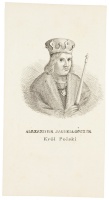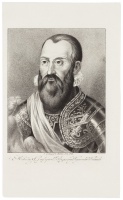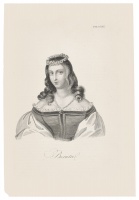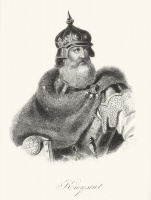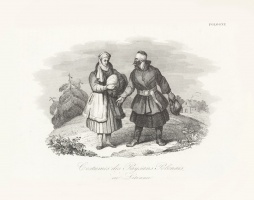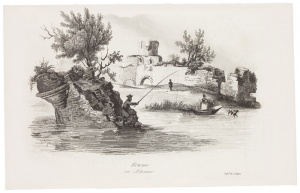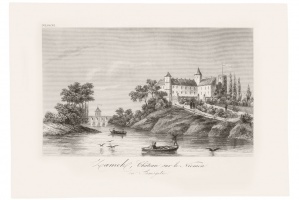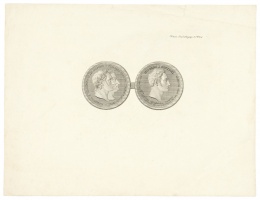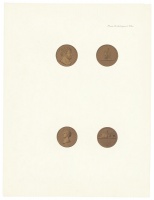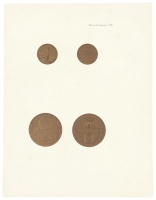
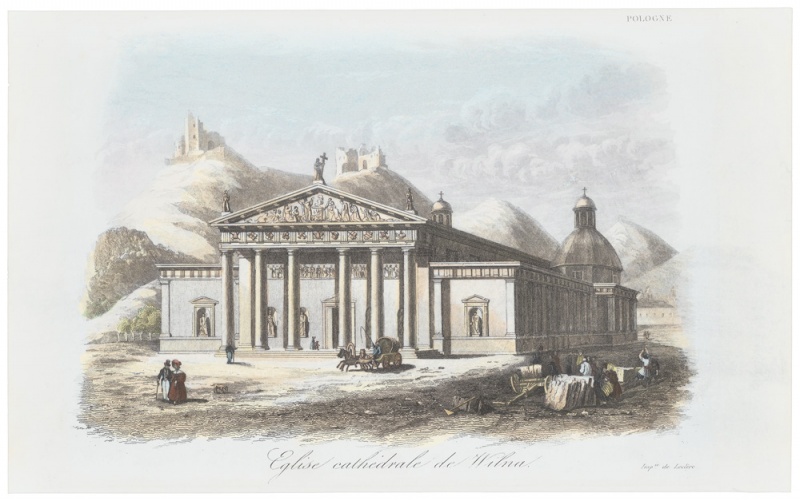

Vilnius Cathedral
| Author: |
Unknown 19th-century artist |
| Created: | 1836–1837 |
| Material: | paper |
| Technique: | coloured steel engraving |
| Dimensions: | 18.50 × 25 cm |
| Signature: | inscription: POLOGNE / Eglise cathedrale de Wilna. / Impie de Leclère |
CHODZKO LEONARD, LA POLOGNE HISTORIQUE, LITTERAIRE, MONUMENTALE ET PITTORESUE, PARIS, 1835–1847.
Leonard Chodźko (1800–1871) published the illustrated book La Pologne historique, littéraire, monumentale et pittoresque (Historical, Literary, Monumental and Picturesque Poland) in Paris. The second volume of the book, published in 1836– 1837, contains a chapter about Vilnius, its history, architectural monuments and environs. It was written by the Vilnius University graduate Felix Wrotnowski. There are three pictures of Vilnius in the book by Chodźko: a colour engraving of the cathedral, a view of Gediminas Hill from Bald Hill, which illustrates an article about the history of the city, and a view with the Paplavų (Slops) suburb, which illustrates the beauty of the environs of the city. The engravings were made by a French engraver, based on lithographs made in 1831 by Karol Raczyński, an artist from Vilnius.
Text author Laima Laučkaitė
This engraving was published by Leonard Chodźko in the second volume of his huge La Pologne historique, littéraire, monumentale et pittoresque (Historical, Literary, Monumental and Picturesque Poland, Paris, 1836–1837, 1838). It illustrates a rather rough historical description of Vilnius Cathedral (pp. 129–131) by Feliks Wrotnowski, a graduate of Vilnius University, who went to live abroad after the uprising of 1831. The author does not conceal his pride in the building as he describes it: ‘Of giant proportions, imposing through its serene simplicity, and situated in a spacious square, this basilica has no equal in Poland, and can easily stand comparison with anything of great beauty in the architecture of other European countries.’
The prototype for the engraving was a design for it drawn in 1786 by the architect Wawrzyniec Gucewicz (1753–1798), previously in the collections of Stanisław August Poniatowski in Warsaw, and now in the Print Room of the Library of Warsaw University. The drawing was copied and added to by the German architect and lithographer Leonhard Schmidtner (1800–1873), who drew the hills and the ruins in the background, the statues on the pediment, and more human figures. A lithograph was made of the painting in the workshop of Daniel Knusman in Warsaw in around 1825, and included in Sammlung der Vorzüglichsten Gebäude in Warschau, aufgenommen, gezeichnet und litographirt von Leonhard Schmidtner (A Collection of Outstanding Warsaw Buildings Identified, Drawn and Lithographed by Leonhard Schmidtner). The artist who made the steel engraving for Chodźko’s publication used the lithograph by Schmidtner, and added more human figures to it for interest.
Text author Rūta Janonienė
Source: Law firm Valiunas Ellex art album VILNIUS. TOPOPHILIA II (2015). Compiler and author Laima Laučkaitė, RES PUBLICA (2018). Compiler and author Rūta Janonienė






